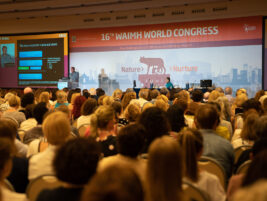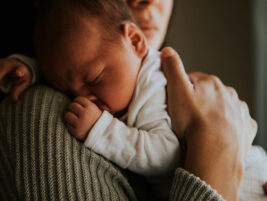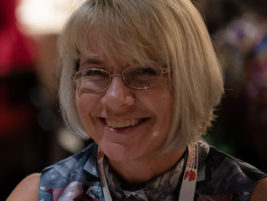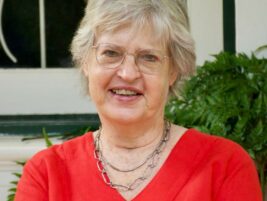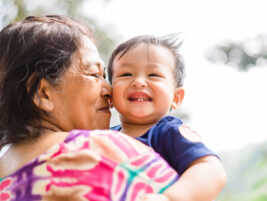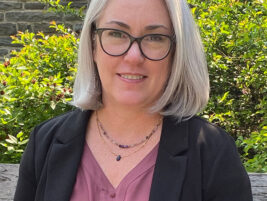On Friday 23 September, 2016, Miri Keren and Maree Foley represented WAIMH at a United Nations (UN) meeting in Geneva. The meeting was a special a Day of General Discussion on Child Rights and the Environment. Miri and Maree attended this meeting as part of WAIMH’s initiative on the Rights of Infants. This article reports on the day.
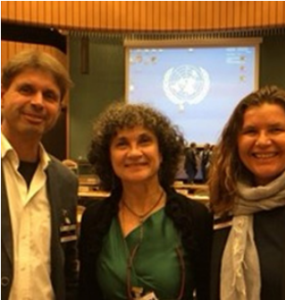
Prior to this meeting, Kai von Klitzing (President of WAIMH) with Board members had written a letter to Mr Mezmur (Chairperson, United Nations Committee on the Rights of the Child (CRC)). This letter outlined the goals of WAIMH and our wish to engage in conversation about the role of infant mental health as an under represented dimension of child rights. In addition, Kai had also introduced us electronically to Prof. Dr. Jörg Maywald (Berlin) and Lothar Krappmann (former member of the CRC).
The day was scheduled for 9 am to 4 pm. Upon arrival at the UN we first had to clear security. At the UN security check point we were administered identity cards that gave us access to the UN premises. The UN is a huge complex. It comprises a web of buildings as well as the international flag corridor at the front entrance. It was exciting and daunting to be there. We both agreed it was wonderful to be there together representing WAIMH.
As we were at the UN in good time before the meeting stated we had an opportunity to view an art exhibition that was running in conjunction with the meeting. The exhibition presented work from the Terre des Hommes International Federation, a leading Swiss child relief agency (https://www.tdh.ch/en).
The exhibition was called: Empowering children to create a healthy environment. The artists were children from the PATH Welfare Society (https://www.pathwelfaresociety.com); a recipient organisation of support from the Terre des International Federation.
During the day meeting we met with Mr Mezmur in person just after his opening address. He advised us that the WAIMH letter had been forwarded to the CRC Bureau. He also said he would make sure it was placed on their agenda and took note of WAIMH as an organisation. He also made a special effort to seek us out after lunch to reassure us that he had received the letter and passed it on and that he held us in mind.
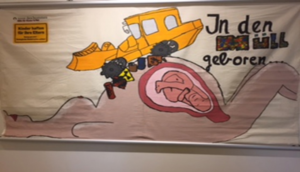
It was super to meet Jörg in person. We had just talked with Mr Mezmur who in turn pointed us out to Jörg. We had a very enjoyable encounter with Jorge and he generously offered very helpful suggestions to help us navigate a pathway within the UN system.
Jörg suggested:
- In his view, many of the people who deal with the child rights convention, while very knowledgeable also needed to be more explicitly knowledgeable about the unique needs and rights of infants;
- That WAIMH endeavour to find a child rights expert with an interest in infants/young children to represent each continent; and
- When the day comes and we have a joint WAIMH and CRC committee meeting (probably in Geneva) that we could have a half day preparation meeting, before this meeting. He also said he would be happy to join us.
Key findings from the day
- The link between the environment and the rights of the child has not been explicitly stated. As a result, this has led to a specific recommendation to add a general comment to the CRC.
- Under 5’s were mentioned: 600,000 children under 5, die from indoor and outdoor pollution every year. 25% of all deaths of children under 5, are related to environmental toxins.
- Even though there is legislation it is often not enforced in industry and business. For example, in gold mining and the problematic corruption between government and business.
- The acknowledgement of: Nature deprivation syndrome as an effect of children’s and parents fear of playing outside due to a toxic environment such as radiation.
- There was a request from participants to place the burden of proof on those who pollute the environment and not on the victims.
- In addition to targeting interventions towards national governments and regional councils, on behalf of WAIMH we suggested to also include parents as a target of intervention. For instance, providing them with information about the impact of the environment on their child’s development.
- Children’s active participation in the committee discussion: For example, children’s participation from Africa and India related to the environmental toxins in their communities.
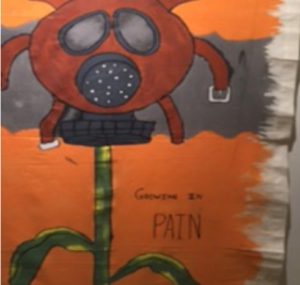
WAIMH and the development of Infant Rights: New actions to consider
These key findings made us think of seeking the voice of parents of infants’ about what they perceive as their rights, in different countries.
Further actions to consider include:
- To plan a meeting between WAIMH and the CRC.
- Locate a person within UNICEF in different parts of the world to help us build a relationship with regional UNICEF personnel who have a special interest in advocating for the rights of infants;
- To place more emphasis on the rights of parents of infants in our WAIMH Infant Rights statement. This would emphasize a point of difference to what is already stated in the Convention and would help abate arguments that our position on infants is redundant as it is already voiced in the current articles of the convention.
WAIMH and the United Nations Day of General Discussion on Child Rights and the Environment
Authors
Foley, Maree
Keren, Miri
Switzerland and Israel



